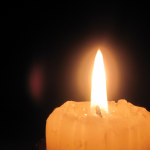
It’s easy to think that tree planting is simple and straightforward. You just dig a hole and drop the tree in, right? Wrong! There’s more to tree planting services than just sticking your new tree in the ground, and unfortunately, tree planting done wrong can have long-term, negative health effects for your tree. In fact, trees that are planted incorrectly are more likely to die within the first year after being transplanted!
When the life of your tree is on the line, it’s important to work with an experienced landscaping and tree service for your new tree installation. Organic Air Tree and Shrub Care does not provide tree planting services at this time; however, we can provide advice on planting your landscape with trees as well as recommend local Avon-area tree planting companies. And, of course, we are available to provide tree feeding and organic tree pest control once your trees have been installed. Give us a call today for more information.
Getting a Healthy Tree Landscape
The International Society of Arboriculture (ISA) recommends the following steps for planting trees:
- Safety first! Before you dig, locate any underground utilities.
- Identify the root/trunk flare (where the stem of the tree expands at its base); the root flare should be planted so it is just above the soil line.
- Dig a broad, shallow hole. The hole should be two to three times wider than and just as deep as the root ball.
- Cut away the wire basket or completely remove the container. Inspect the root ball to locate any circling roots; these should be straightened or removed.
- Set the tree in the hole at the proper height. Trees planted too deeply may suffer from poor root development (due to a lack of oxygen) or girdling roots.
- Make sure the tree is straight. Prior to backfilling, it may be helpful to have another person inspect the tree from several angles to ensure it is straight in the hole.
- The hole should be filled gently and firmly. Soil should be packed around the root ball to provide stability. Water periodically while backfilling to help eliminate air pockets (which can cause roots to dry out).
- Do not fertilize tree at the time of planting.
- Unless necessary to provide stability, do not stake the tree. Research has shown that trees develop stronger trunks and root systems when they are NOT staked at the time of planting.
- Apply mulch around the base of the tree, but do NOT pile mulch against the tree trunk. Mulch can keep soil moist and reduce competition from grass/weeds, but piling mulch against the trunk can lead to girdling roots, insect problems, and other issues.
This approach offers your new tree the support it needs to develop a thriving root structure, long-lasting strength, and outstanding beauty.
Remove Burlap and Wire Basket
Many tree planting companies subscribe to the outdated belief that you can just leave a transplanted tree’s root ball wrapped up in burlap and wire when you put it in the ground. However, even natural rope and burlap often decay far slower than anticipated. As a result, trees planted with the burlap in place aren’t able to regrow roots effectively. Keep in mind that when a nursery tree is transplanted, it’s just lost 90% of its root structures. Your new tree needs to reestablish a vigorous root system, fast, and it simply can’t do that when it’s trapped in burlap and wire.
When planting trees, it’s very important to always follow the ISA’s recommendation to remove rope/wire from around tree trunks and to peel back burlap wrappings from the top third of the root ball. This allows roots to spread out and quickly establish themselves in the new location for optimal tree health.
Avoid Planting Trees Too Deeply
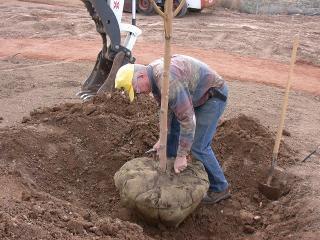 Planting trees too deeply may seem like a minor slip-up, but, unfortunately, it can actually lead to major issues, such as the formation of stem-girdling roots. Girdling roots will eventually kill a tree, so when your landscaping and tree service plants a new tree too deeply, it’s a big deal! These are the most common issues we see from many tree planting companies:
Planting trees too deeply may seem like a minor slip-up, but, unfortunately, it can actually lead to major issues, such as the formation of stem-girdling roots. Girdling roots will eventually kill a tree, so when your landscaping and tree service plants a new tree too deeply, it’s a big deal! These are the most common issues we see from many tree planting companies:
- Planting above the root flare. Trees naturally grow with their root flare (where the trunk spreads out at the bottom of the tree) at ground level. However, many tree planting services install transplanted trees too deeply, burying the root flare below the ground. This results in what we call a “telephone pole” tree; there’s no root flare visible. Sadly, these types of telephone pole trees often succumb to girdling roots because of being planted too deeply, and ultimately die.
- Planting at the graft union. Many nursery trees are grafted, a process that combines two different trees to secure the root stock of one and the appearance of another. This grafting process creates a swollen area on the trunk, generally several inches above the root flare. When planting trees, it is a common mistake to plant the graft union at the soil line. This error places the actual root flare well below ground, leading to the formation of girdling roots. See images below.
- Over mulching. Mulch should never be piled against a tree trunk. Adding mulch around a tree can help keep the soil moist; however, you always want to make sure that mulch is pulled back from the trunk itself. That’s because over mulching creates an environment much like planting too deeply and often results in girdling roots and unhealthy trees.
Many installers don’t know to look for the root flare when providing tree planting services or they confuse the graft union with the root flare. Both of these mistakes can negatively impact your tree’s long-term health. Don’t risk it by hiring just any tree planting company. Work with the Certified Arborist team from Organic Air Tree and Shrub Care for advice on tree planting done right. We offer planting recommendations as well as referral to a qualified tree planting company. When planting fruit trees, conifers, or deciduous stock, it’s vital to place each tree at the correct level to ensure the root flare rests on the soil line for a happy, healthy tree both today and down the road.
Learn more when you call to speak to our team today!
Distinguishing Between the Graft Union and the Root Flare
| Planted too deep – “telephone pole” | Planted at level of graft union |
|---|---|
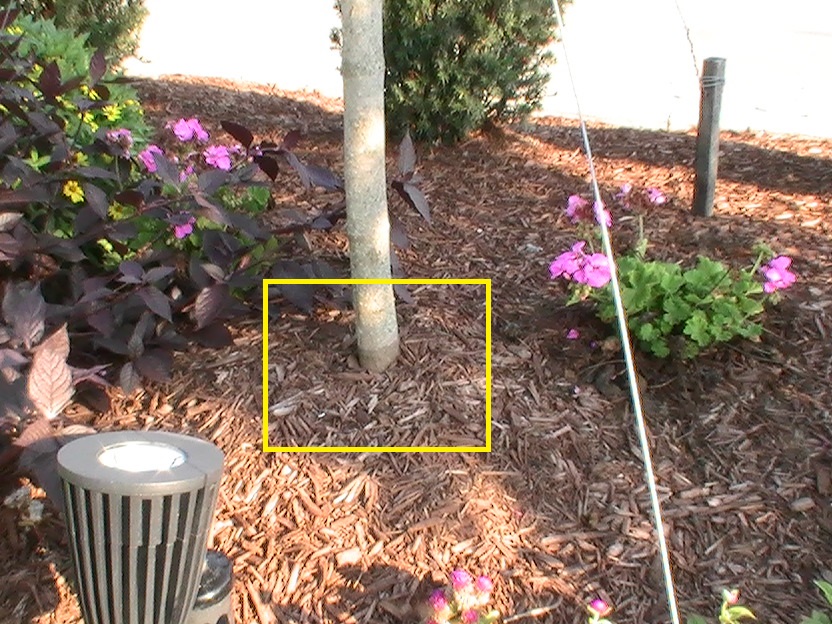 | 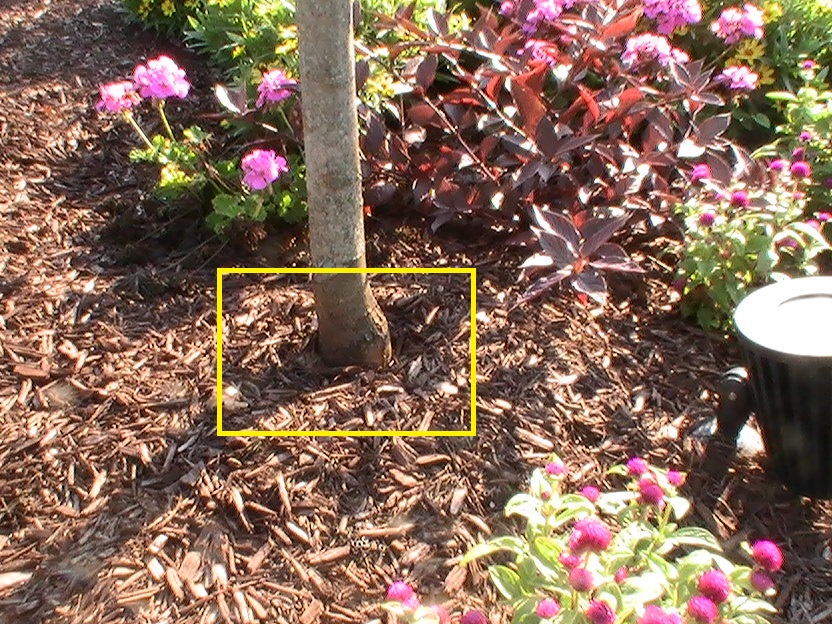 |
| Root flare below grade | Correctly planted with root flare at grade level |
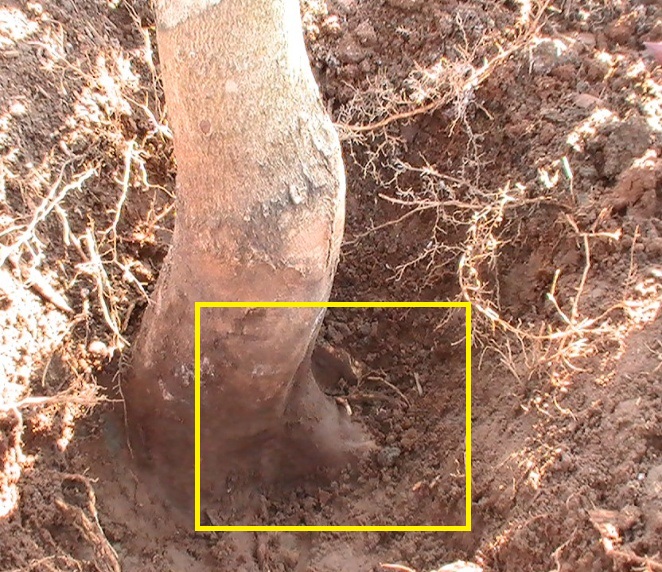 | 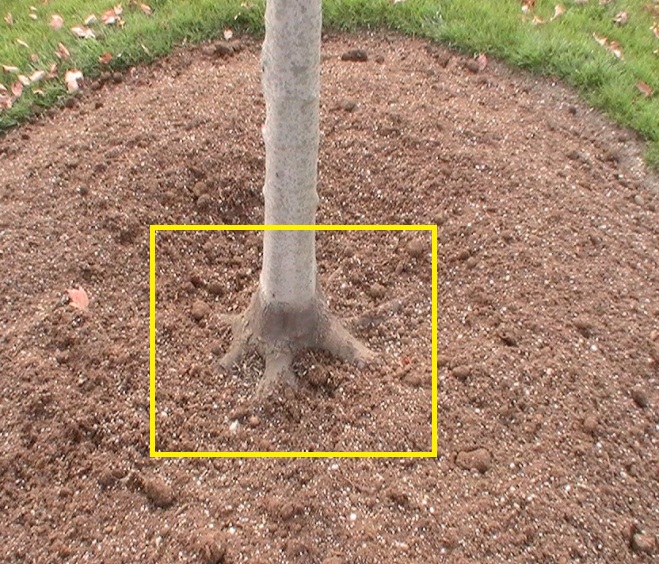 |
Resources
For more information, you can look up:
- Correct tree planting: “The Perils of Planting Trees Too Deeply,” Ohio Department of Natural Resources:
- Deep roots: “Deep Roots are Harming Trees,” Morton Arboretum, Chicago
- Root ball removal: “Do I Remove Root Ball Packing Materials?,” Michael Kuhns, Extension Forestry Specialist, Utah State University; and Brook Lee, Community Forester, Utah Division of Forestry, Fire & State Lands
